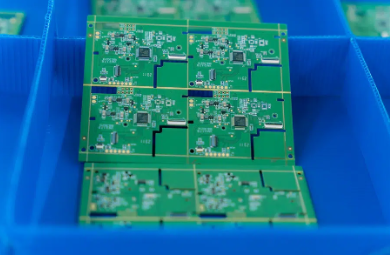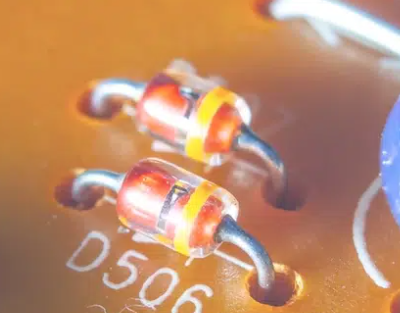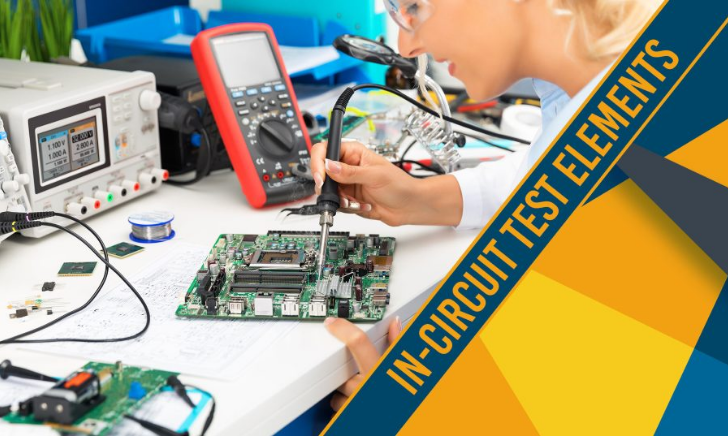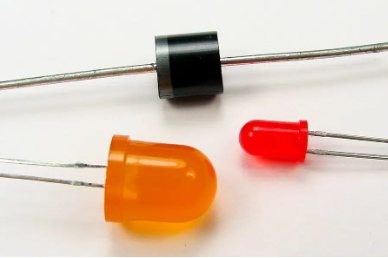- Ameya360 Component Supply Platform >
- Trade news >
- Ameya360:How In-circuit Test Elements Make PCB Testing Easier
Ameya360:How In-circuit Test Elements Make PCB Testing Easier
The growing complexity of electronic designs is challenging the PCB manufacturing industry to innovate PCB inspection and testing methodologies. To bring out reliable products with maximum yield, a variety of inspection and test methods are employed during the PCB manufacturing process. In-circuit testing (ICT) is used to detect flaws in manufacturing processes and components. It offers high fault coverage and quick test throughput as compared to other available test methodologies. The ICT diagnostic accuracy is exceptional with low incorrect fail rates.
The introduction of the ICT system shifted the focus from the functionality testing of the PCB to the testing of components’ functionality and the integrity of the assembly process. This largely simplified the test pattern generation as the understanding of complex board functionality was eliminated for the programmer. A bed-of-nails test fixture used in the ICT method allows electrical test access to every net on the PCB and enables stimulating and measuring each component independently. This method has significantly reduced the time to generate test vectors and has improved the quality of the test coverage.
Elements of In-Circuit Test:
There are multiple types of ICT machines available in the market. Based on the test process, types of PCBs, and production volume you can choose the machine for your requirement. The basic elements of an ICT machine are as follows:
In-circuit tester: A bed-of-nails used as drivers and sensors that are inserted on pins of the device under test (DUT). They are used to apply voltage and current to the device pins to measure electrical parameters like impedance, capacitance, and resistance of the circuit.
Fixture: A fixture is designed specifically for a PCB and acts as an interface between the board and the In-circuit tester. It connects the test stimulus and monitoring points to the corresponding pins on the board through bed-of-nails.
Software: It is the set of test vectors generated specific to a board based on the type of tests to be done. It also provides control of the test process by collecting data from the probes. A pass or fail criteria is generated and applied while testing the PCBs. Test reports are generated that can assist in troubleshooting the faults.
Apart from the standard ICT machines, there are some advanced variants like Flying probe testers that can accommodate board updates by changing software, Cable form testers optimized to test cables, and Manufacturing defect analyzers that can spot defects like short and open circuits on the printed circuit board assembly.
Faults detected using ICT machines
The test coverage offered by the in-circuit tester is diverse. Manufacturers perform both power-off and power-on tests using ICT machines.
PCB defects detected in power-off mode are:
• Shorts between component pins and traces
• Resistor values
• Missing passive or analog parts
• Correct jumper settings
• Opens with no electrical connectivity
• Lifted leads
• Solder bridge
• BGA shorts and opens
Also, PCB defects captured during power-on mode are:
• Capacitance and inductance values
• Misorientation of mounted analog and digital parts
• Current gain value (beta) of the transistors
• Timing parameters of digital components
• Programming error of memory devices
Merits of in-circuit testing
ICT has made PCB testing easier by offering several advantages as below:
Easy program generation without the need to understand the board functionality has significantly reduced the test development time.
Since the setup can access all nets and component pins of the circuit board, the test coverage is maximum as compared to other PCB test methods.
Minimal scope for operator error as the manual intervention required is limited.
Quick fault detection and simple interpretation of error saves test and debug time for the operator.
Detects both assembly and functional faults of the PCB.
Software can operate on both UNIX and windows OS
Many tests performed in power-off mode provide a safer testing method for PCBs and hence reduced damage.
Once installed, ICT setups require minimal maintenance as they are robust and operate reliably for years.
Development in ICT systems
There are several improvements in the latest ICT systems. The possible erosion of test point access on PCBs, diverse test case requirements for products, and demand for high yield in volume productions are addressed. With the development in test strategies, the In-circuit test method is also progressing to provide excellent test coverage for PCB assemblies.
ICT vendors are offering scalable ICT test systems to satisfy diverse test requirements in a single compatible platform. For addressing high-volume manufacturing requirements, some ICT systems support parallel testing of components on the board. High-accuracy probe-fixturing technologies are available today that can establish smaller yet reliable test points.
The cost of the test fixture is quite high and the profit depends on the build volume. It is more suitable for medium to high-volume PCB production. High board complexity and dimensions will add to the cost as the fixture density and size also increase. But the reliability and test coverage offered by this technique compensates for the other drawbacks.
Compared to the flying probe test method, the In-circuit test is faster. Its ability to test for both assembly and functional defects makes it a better choice in large-volume testing. ICT can perform sophisticated tests specified in the Joint Test Action Group (JTAG) standards. Since the fixtures are built specifically for the test boards, it has to be done only after the PCB layout is finalized. The complexity involved in building the test fixtures calls for a substantial amount of time and money from the overall production budget.
Conclusion
To identify the best test strategy for your PCB assembly, it is necessary that you collaborate with an experienced contract manufacturer. They can offer guidance based on your specific needs with a complete understanding of the test strategies. For prototypes or low-volume PCB assembly, ICT is not recommended. The PCB must be in the production phase with a complete design freeze. It is ideal to build test fixtures for production PCBs since there are no re-spins expected. Also, to recover the cost of test infrastructure, it is ideal to use ICT in bulk PCB productions.
Online messageinquiry

What is “component placement” in PCB?

15 Common PCB Circuit Effects
- Week of hot material
- Material in short supply seckilling
| model | brand | Quote |
|---|---|---|
| RB751G-40T2R | ROHM Semiconductor | |
| CDZVT2R20B | ROHM Semiconductor | |
| BD71847AMWV-E2 | ROHM Semiconductor | |
| MC33074DR2G | onsemi | |
| TL431ACLPR | Texas Instruments |
| model | brand | To snap up |
|---|---|---|
| ESR03EZPJ151 | ROHM Semiconductor | |
| TPS63050YFFR | Texas Instruments | |
| STM32F429IGT6 | STMicroelectronics | |
| BP3621 | ROHM Semiconductor | |
| BU33JA2MNVX-CTL | ROHM Semiconductor | |
| IPZ40N04S5L4R8ATMA1 | Infineon Technologies |
- Week of ranking
- Month ranking
Qr code of ameya360 official account
Identify TWO-DIMENSIONAL code, you can pay attention to


Please enter the verification code in the image below:

























